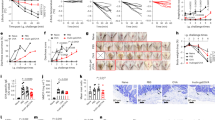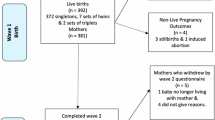Abstract
Background
Ascribing food allergy diagnosis to patients who are not allergic is well described, but its implications on oral immunotherapy (OIT) have not been studied. The aim was to study non-allergic patients referred for OIT.
Methods
All patients who began OIT at Shamir Medical Center between November 2015 and August 2020 were included. Medical records were reviewed, and skin prick tests (SPT) and/or specific IgE were measured. Patients were challenged to the index food. Allergic and non-allergic patients were compared.
Results
A total of 1073 patients were studied (milk, n = 327; egg, n = 41; peanut, n = 272; sesame, n = 130; and tree nuts, n = 303) and 87 (8.1%) were found non-allergic (milk, n = 21; egg, n = 6; sesame, n = 5; peanut, n = 29; tree nuts, n = 26). Predictors of being not allergic were no previous reaction to the index food (OR = 3.3, p = 0.001), not having asthma (OR = 2.4, p = 0.001), or HDM sensitization (OR = 2.0, p = 0.007), male sex (OR = 2.3, p = 0.004), and a smaller SPT wheal size (OR = 1.5, p < 0.001).
Conclusions
A substantial number of patients referred for OIT are mislabeled with food allergy, suffer from unjustly food limitations and impairments in quality of life, and “take up” OIT places of true allergic patients. Awareness of OIT centers to this phenomenon is important.
Impact
-
A significant number (8.1%) of patients referred for OIT are found not allergic to the food they intended to treat.
-
This study characterizes non-allergic patients referred for OIT (a lack of previous reaction to the index food, a smaller or negative SPT wheal size, and less atopic co-morbidities) and discusses the implications of such referrals.
-
Increased awareness by OIT centers to potential non-allergic patients referred for OIT is required, including screening of patients before treatment initiation, to minimize unnecessary treatments of non-allergic patients.
Similar content being viewed by others
Log in or create a free account to read this content
Gain free access to this article, as well as selected content from this journal and more on nature.com
or
Data availability
Additional data regarding the current study are available from the corresponding author on reasonable request.
References
Gupta, R. et al. The economic impact of childhood food allergy in the United States. JAMA Pediatr. 167, 1026–1031 (2013).
Allen, C. W., Bidarkar, M. S., vanNunen, S. A. & Campbell, D. E. Factors impacting parental burden in food-allergic children. J. Paediatr. Child Health 51, 696–698 (2015).
Cummings, A. J., Knibb, R. C., King, R. M. & Lucas, J. S. The psychosocial impact of food allergy and food hypersensitivity in children, adolescents and their families: a review. Allergy 65, 933–945 (2010).
Anagnostou, K. et al. Assessing the efficacy of oral immunotherapy for the desensitization of peanut allergy in children (STOP II): a phase 2 randomized controlled trial. Lancet 383, 1297–1304 (2014).
Nurmatov, U. et al. Allergen immunotherapy for IgE-mediated food allergy: a systematic review and meta-analysis. Allergy 72, 1133–1147 (2017).
Pajno, G. B. et al. EAACI guidelines on allergen immunotherapy: IgE-mediated food allergy. Allergy 73, 799–815 (2018).
Vickery, B. P. et al. AR101 oral immunotherapy for peanut allergy. PALISADE Group of Clinical Investigators. N. Engl. J. Med. 379, 1991–2001 (2018).
Traister, R. S., Green, T. D., Mitchell, L. & Greenhawt, M. Community opinions regarding oral immunotherapy for food allergies. Ann. Allergy Asthma Immunol. 109, 319–323 (2012).
Elizur, A. et al. Clinical and laboratory 2-year outcome of oral immunotherapy in patients with cow’s milk allergy. Allergy 71, 275–278 (2016).
Nachshon, L., Goldberg, M. R., Katz, Y., Levy, M. B. & Elizur, A. Long-term outcome of peanut oral immunotherapy – real life experience. Pediatr. Allergy Immunol. 29, 519–526 (2018).
Nachshon, L. et al. Efficacy and safety of sesame oral immunotherapy - a real-world, single center study. J. Allergy Clin. Immunol. Pract. 7, 2775.e2–2781.e2 (2019).
Elizur, A. et al. Single walnut oral immunotherapy for desensitizing walnut and additional tree-nut allergies: a prospective cohort study (Nut CRACKER study). Lancet Child Adolesc. Health 3, 312–321 (2019).
Niggemann, B. When is an oral food challenge positive? Allergy 65, 2–6 (2010).
Appel, M. Y. et al. Evaluation of the basophil activation test and skin prick testing for the diagnosis of sesame food allergy. Clin. Exp. Allergy 48, 1025–1034 (2018).
Elizur, A. et al. NUT Co Reactivity - ACquiring Knowledge for Elimination Recommendations (NUT CRACKER) study. Allergy 73, 593–601 (2018).
Sporik, R., Hill, D. J. & Hosking, C. S. Specificity of allergen skin testing in predicting positive open food challenges to milk, egg and peanut in children. Clin. Exp. Allergy 30, 1540–1546 (2000).
McWilliam, V. et al. Skin prick test predictive values for the outcome of cashew challenges in children. J. Allergy Clin. Immunol. Pract. 8, 141.e2–148.e2 (2020).
Bégin, P. et al. CSACI guidelines for the ethical, evidence-based and patient-oriented clinical practice of oral immunotherapy in IgE-mediated food allergy. Allergy Asthma Clin. Immunol. 16, 20 (2020).
Martorell, A. et al. Immunotherapy Egg and Milk Spanish Guide (ITEMS Guide). Part I: cow milk and egg oral immunotherapy: introduction, methodology, rationale, current state, indications, contraindications, and oral immunotherapy build-up phase. J. Investig. Allergol. Clin. Immunol. 27, 225–237 (2017).
Ebisawa, M. et al. Japanese guidelines for food allergy 2020. Allergol. Int. 69, 370–386 (2020).
Pajno, G. B. et al. Allergen-specific Immunotherapy panel of the Italian Society of Pediatric Allergy and Immunology (SIAIP). Clinical practice recommendations for allergen-specific immunotherapy in children: the Italian consensus report. Ital. J. Pediatr. 43, 13 (2017).
Rodríguez Del Río, P. et al. Food immunotherapy practice: nation differences across Europe, The FIND project. Allergy https://doi.org/10.1111/all.15016 (2021).
Greenhawt, M. J. & Vickery, B. P. Allergist-reported trends in the practice of food allergen oral immunotherapy. J. Allergy Clin. Immunol. Pract. 3, 33–38 (2015).
Rigbi, N. E. et al. Changes in patient quality of life during oral immunotherapy for food allergy. Allergy 72, 1883–1890 (2017).
Nachshon, L. et al. Patient characteristics and risk factors for home epinephrine-treated reactions during oral immunotherapy for food allergy. J. Allergy Clin. Immunol. Pract. 9, 185.e3–192.e3 (2021).
Elizur, A., Bollyky, J. B. & Block, W. M. Elimination diet and the development of multiple tree-nut allergies. Pediatr. Res. 82, 671–677 (2017).
Du Toit., G. et al. Randomized trial of peanut consumption in infants at risk for peanut allergy. N. Engl. J. Med. 372, 803–813 (2015).
Hill, D. A., Grundmeier, R. W., Ram, G. & Spergel, J. M. The epidemiologic characteristics of healthcare provider-diagnosed eczema, asthma, allergic rhinitis, and food allergy in children: a retrospective cohort study. BMC Pediatr. 16, 133 (2016).
Nachshon, L. et al. The prevalence of food allergy in young Israeli adults. J. Allergy Clin. Immunol. Pract. 7, 2782.e4–2789.e4 (2019).
Liu, A. H. et al. National prevalence and risk factors for food allergy and relationship to asthma: results from the National Health and Nutrition Examination Survey 2005-2006. J. Allergy Clin. Immunol. 126, 798.e13–806.e13 (2010).
Acknowledgements
We would like to thank Hasia Duani and Tehila Abargil for coordinating the patient clinical visits and to Keren Golobov, Mor Carmel, and Michal Noah Tal for assisting with OFC performance.
Funding
This study was self-supported. M.R.G. is funded by a Kamea grant from the Ministry of Health, Israel.
Author information
Authors and Affiliations
Contributions
All authors have met the Pediatric Research authorship requirements. Y.K.: conceptualization (equal); investigation (lead); writing original draft (equal); review and editing (equal). L.N.: investigation (supporting); review and editing (equal). M.R.G.: investigation (supporting); review and editing (equal). M.B.L.: investigation (supporting); review and editing (equal). N.E.-R.: investigation (supporting); review and editing (equal). A.E.: conceptualization (equal); investigation (supporting); formal analysis (lead); writing original draft (equal); review and editing (equal).
Corresponding author
Ethics declarations
Competing interests
The authors declare no competing interests.
Ethics approval and consent to participate
Patients’ consent was not required.
Additional information
Publisher’s note Springer Nature remains neutral with regard to jurisdictional claims in published maps and institutional affiliations.
Supplementary information
Rights and permissions
About this article
Cite this article
Koren, Y., Nachshon, L., Goldberg, M.R. et al. Characteristics of patients diagnosed as non-allergic following food allergy oral immunotherapy referral. Pediatr Res 93, 643–648 (2023). https://doi.org/10.1038/s41390-022-02119-3
Received:
Revised:
Accepted:
Published:
Issue date:
DOI: https://doi.org/10.1038/s41390-022-02119-3
This article is cited by
-
Canadian Society of Allergy and Clinical Immunology position statement: panel testing for food allergies
Allergy, Asthma & Clinical Immunology (2024)



